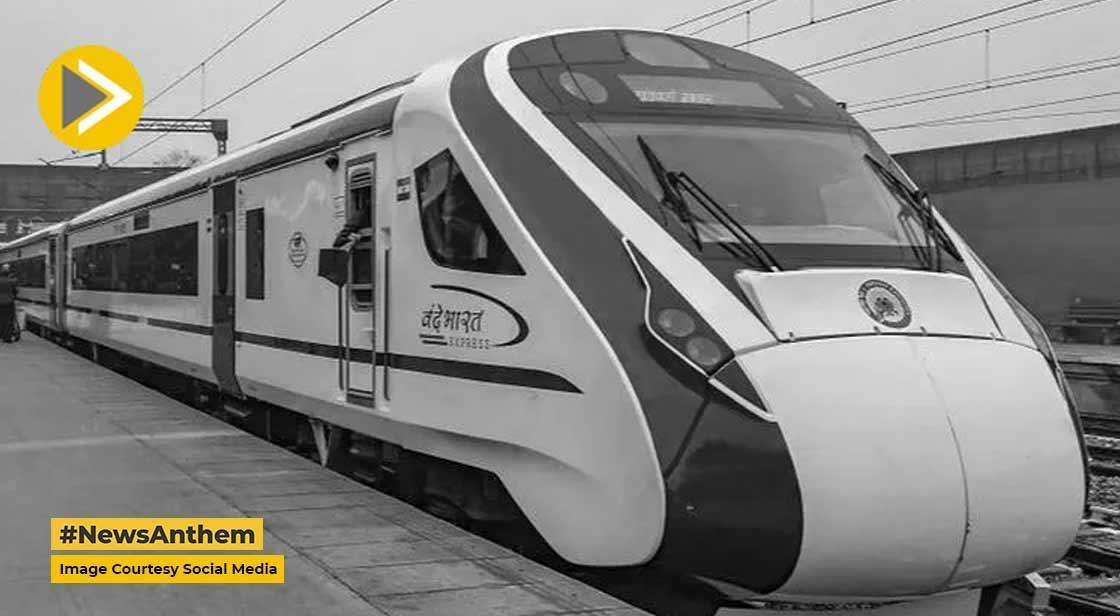Indian Railways to roll out 200 new Vande Bharat trains in three years

News Synopsis
The Indian Railways is set to undergo a massive transformation following the Budget 2025 projections. To enhance connectivity and accommodate the growing demand for affordable public transport, the government has announced the production of 17,500 Non-AC General Coaches and Sleeper Coaches over the next few years. This initiative is aimed at providing better travel facilities, particularly for the economically weaker sections of society.
Boosting Affordable Travel and Railway Infrastructure
The decision to manufacture 17,500 new general coaches is expected to significantly ease congestion in trains while offering improved travel options to millions of passengers. With a high demand for budget-friendly railway travel, this initiative will help in better accommodating passengers while reducing overcrowding on existing trains.
Railway Minister Ashwini Vaishnaw reiterated the importance of maintaining the 2:3 ratio for non-AC coaches and 1:3 ratio for AC coaches to ensure accessibility for all sections of society. In addition to expanding general coach availability, Indian Railways has launched a special drive to increase the number of general coaches in different regions.
Union Budget Allocation and Railway Development Plans
While presenting the Union Budget 2025, the Indian government continued its focus on railway development by allocating ₹2.52 lakh crore to enhance infrastructure and services. The budget includes:
-
200 Vande Bharat Trains (including sleeper and chair car variants)
-
100 Amrit Bharat Trains for improved connectivity to smaller cities
-
50 Namo Bharat Trains
-
100 major railway infrastructure projects
Additionally, the government has set aside ₹4.6 lakh crore for new railway projects, which include:
-
Construction of new railway lines
-
Expansion of existing railway tracks
-
Upgrading railway stations
-
Building new flyovers and underpasses
The estimated time frame for completion of these projects is between four to five years.
Introduction of Amrit Bharat and Namo Bharat Trains
As part of its expansion strategy, Indian Railways is working on the Amrit Bharat and Namo Bharat train series, which will boost connectivity between various cities and regions. The introduction of these trains aims to:
-
Improve regional train services for short- and medium-distance travel
-
Enhance accessibility for semi-urban and rural areas
-
Reduce dependence on road transport by offering faster and more efficient rail options
Targeted General Coach Production and Infrastructure Expansion
The railway ministry has also revealed a production roadmap for general coaches:
-
1,400 general coaches are set to be manufactured by March 31, 2025
-
2,000 general coaches will be built in FY 2025-26
-
1,000 new railway flyovers and bridges have been approved for construction
This production strategy is expected to significantly improve travel conditions for non-AC passengers while strengthening railway infrastructure across the country.
Increasing Rail Cargo Capacity to Compete Globally
Indian Railways is not only focusing on passenger services but also expanding its freight capabilities. According to Railway Minister Ashwini Vaishnaw, the goal is to carry 1.6 billion metric tonnes of cargo by March 31, 2025, making India the second-largest cargo railway network in the world, after China.
With increased electrification, modernization of railway lines, and upgraded freight corridors, Indian Railways is set to boost India’s logistical capacity, benefiting multiple industries, including manufacturing, agriculture, and trade.
100% Electrification and Enhanced Railway Safety
A major milestone for Indian Railways is the achievement of 100% electrification by the end of this financial year. This shift will significantly reduce the dependency on fossil fuels, leading to:
-
Lower operational costs for Indian Railways
-
Improved efficiency and speed of trains
-
Reduction in carbon emissions, contributing to environmental sustainability
Additionally, the government has placed a strong emphasis on rail safety, allocating ₹1.14 lakh crore to safety measures in this financial year. The allocation is set to increase to ₹1.16 lakh crore in the next financial year, ensuring better accident prevention, advanced signaling systems, and track maintenance.
Conclusion
The Indian Railways is undergoing a major transformation with a focus on affordable travel, infrastructure expansion, electrification, and safety. With the planned production of 17,500 general coaches, introduction of new train categories, and expansion of cargo transport, the railway sector is set to play a crucial role in India’s economic growth. As these developments take shape over the next few years, millions of passengers will benefit from improved connectivity and enhanced travel experiences.
You May Like









